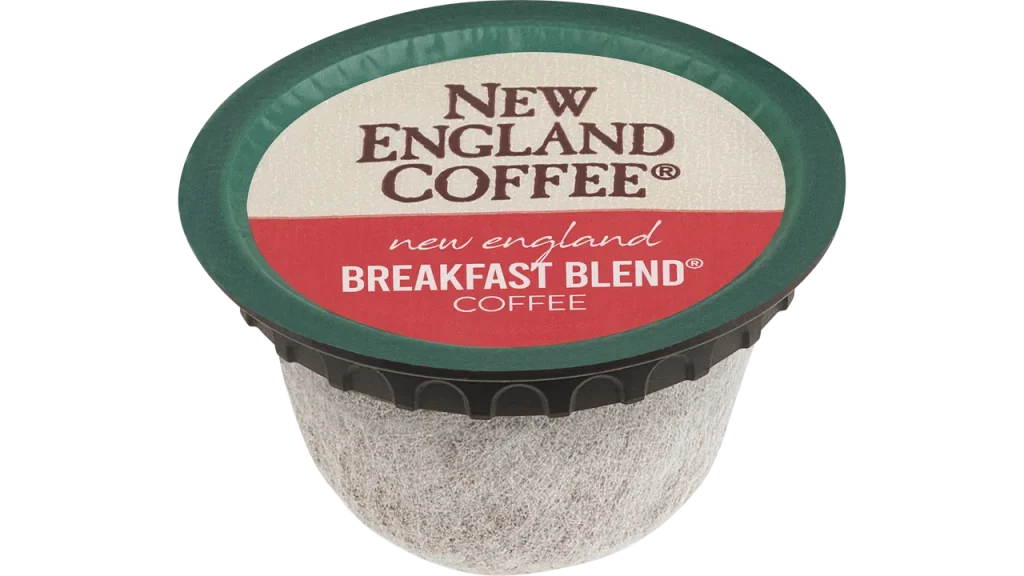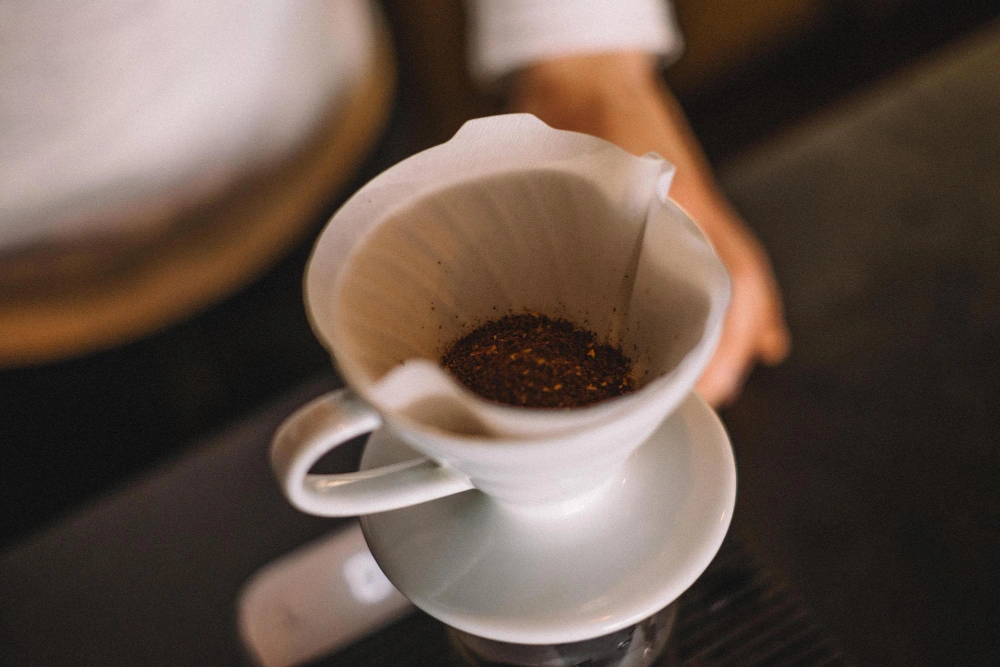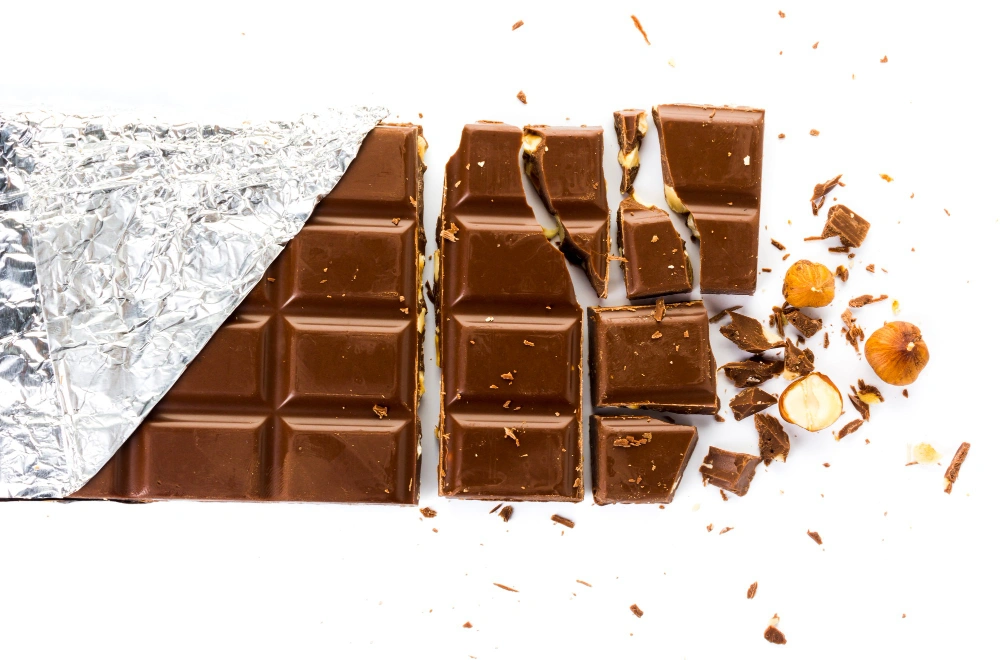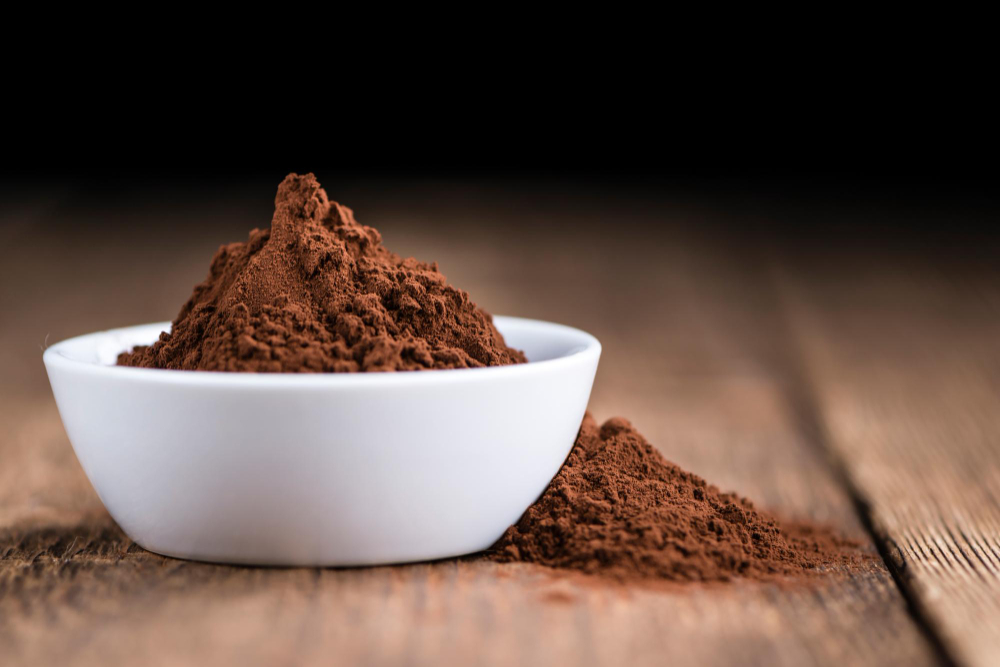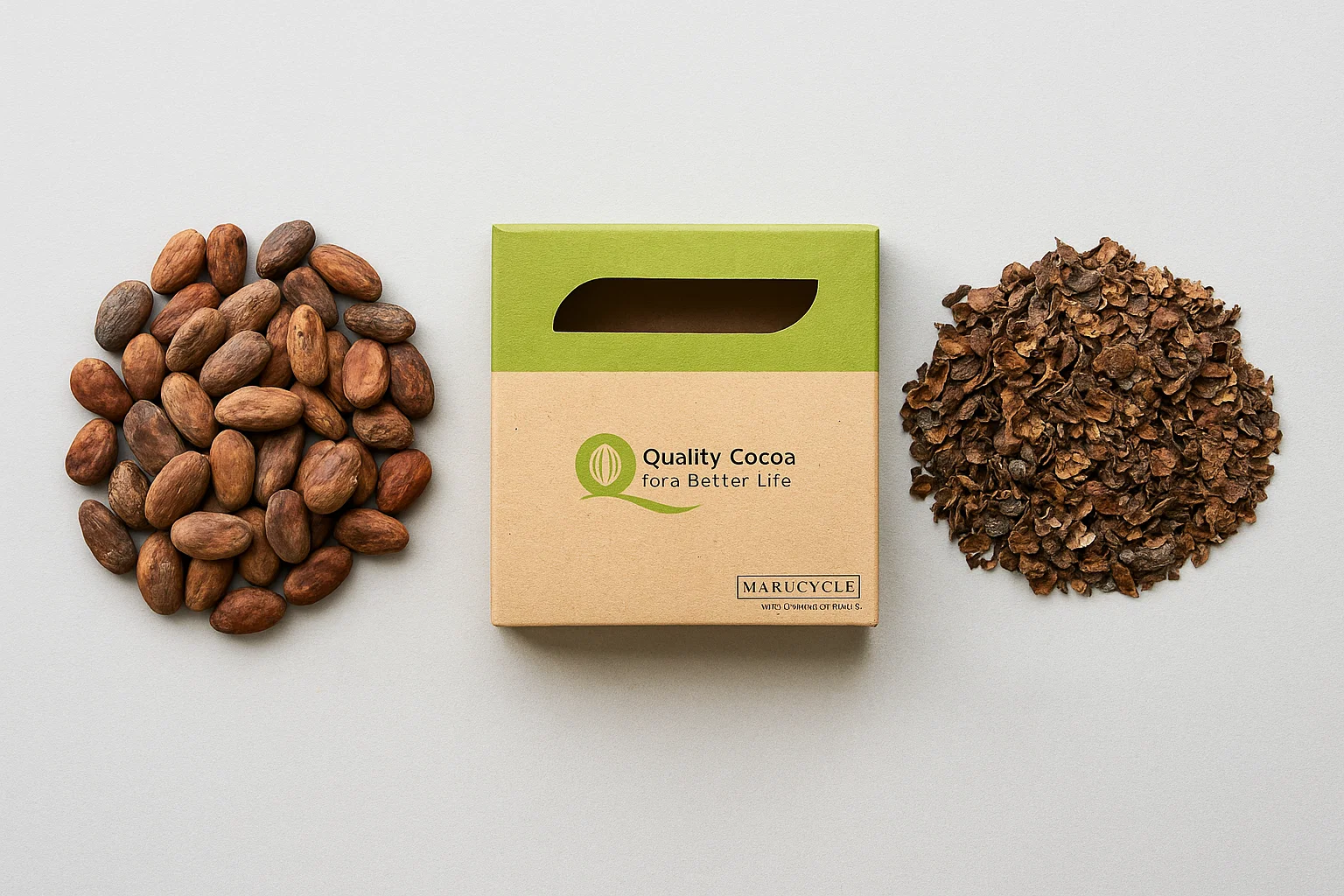
From Waste to Innovation
Sustainable packaging with cocoa shells transforms what was once considered agricultural waste into a valuable resource for the future. Cocoa shells, the protective outer layer of cocoa beans, are typically discarded during processing. However, they contain valuable natural fibers and bioactive compounds that can be repurposed into eco-friendly packaging materials.
By converting cocoa shells into sustainable packaging, manufacturers reduce waste, lower production costs, and minimize the environmental footprint of their products. This approach not only aligns with global sustainability goals but also offers brands a unique opportunity to connect with environmentally conscious consumers through a tangible commitment to green innovation.
Fibrous Composition and Structural Strength
Cocoa shells are rich in plant fibers such as cellulose and lignin, which give the material exceptional strength and rigidity.
This robust structure plays a critical role in enhancing mechanical resistance and ensuring long-lasting durability in packaging applications.
The natural composition allows packaging made from cocoa shells to replace heavier and more resource-intensive materials, reducing transportation costs and improving handling efficiency, all while minimizing environmental impact.
Natural Resistance to Moisture
One of the exclusive features of cocoa shells is the presence of residual cocoa butter, which acts as a natural barrier against moisture penetration.
From a packaging performance standpoint, this property extends product shelf life and reduces the need for additional synthetic moisture-proof coatings.
particularly beneficial for food products such as chocolate, snacks, and coffee.
Valuable Mineral Content
In addition to fibers, cocoa shells contain significant amounts of minerals such as potassium, calcium, and magnesium.
This characteristic allows post-use packaging waste to be repurposed as raw material for producing organic fertilizers, strengthening the circular economy and adding environmental value to the end-of-life stage of the packaging.
Advantages of Sustainable Packaging with Cocoa Shells
Cocoa shells, one of the most abundant agricultural by-products in the chocolate industry, possess unique physical and chemical properties that make them ideal for producing sustainable packaging with cocoa shells. From a structural perspective, cocoa shells can rival many industrial packaging materials, while their biodegradable nature and moisture resistance provide significant environmental benefits.
Below are three key characteristics that make them an excellent eco-friendly choice :
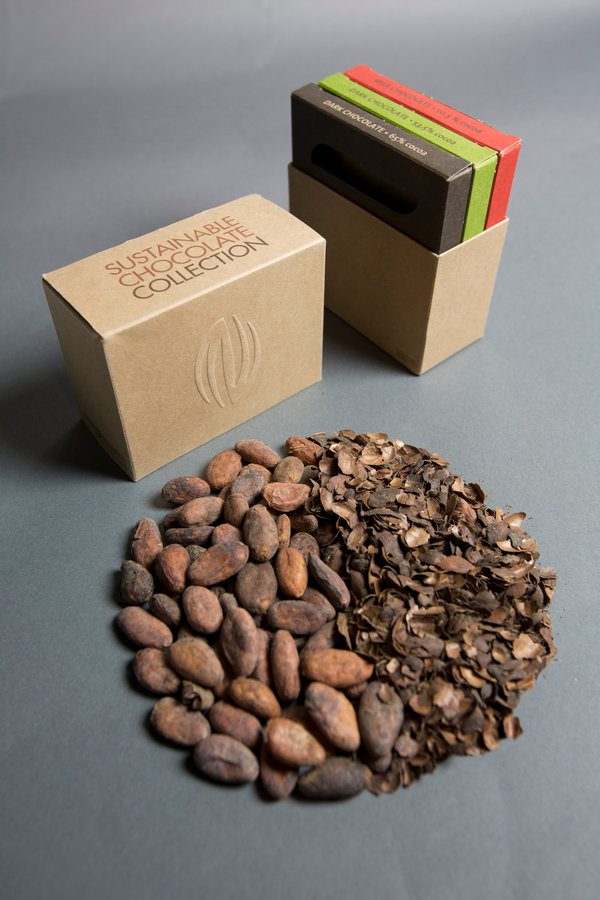
Barry Callebaut Project and the Circular Economy
Barry Callebaut, the world’s largest producer of high-quality chocolate and cocoa products, has incorporated sustainable packaging as a core pillar of its global strategy, known as Forever Chocolate. As part of this initiative, the EMEA region announced the introduction of eco-friendly packaging solutions, replacing conventional materials with cocoa shell-based alternatives.
According to Massimo Selmo, Global Head of Sourcing at Barry Callebaut, the company annually procures 12 million square meters of FSC-certified packaging (equivalent to 1,875 football fields) and 7,497 tonnes of sustainable materials annually.
The FSC certification ensures that all packaging materials are sourced responsibly, considering environmental, social, and economic impacts. This project reflects Barry Callebaut’s commitment to sustainable innovation, using Sustainable packaging with cocoa shells to combine natural aesthetics with reduced environmental footprint.
Sustainable Packaging Design and Its Impact on Brand & Customer Experience
- Utilizing natural colors and textures to evoke a sense of sustainability and connection to the product’s origin.
- Aligning sustainable design with the brand’s visual identity to enhance recognition.
- Creating an eco-friendly and premium feel that stands out on shelves and in display environments, reinforcing the brand’s environmental values.
Successful Examples of Sustainable Packaging with Cocoa Shells in Leading Global Brands
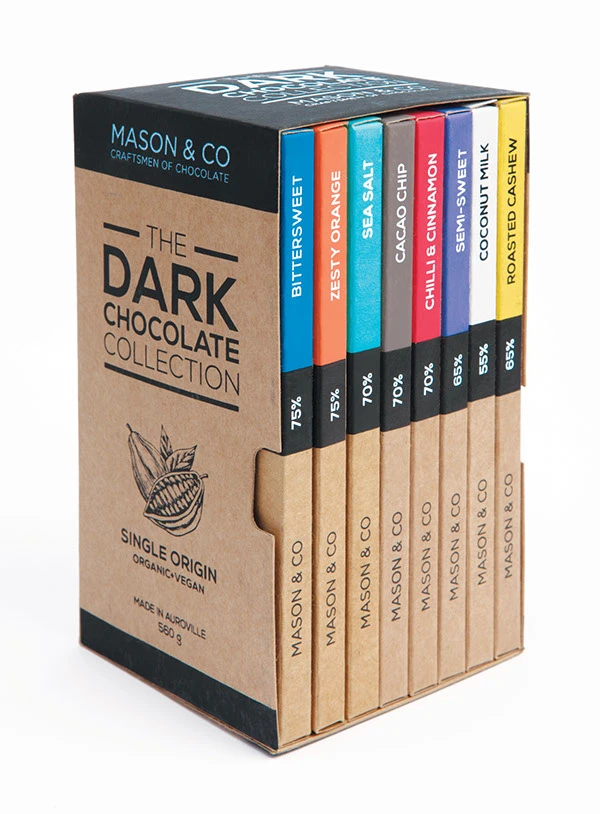
Lower Raw Material Costs and Added Value from waste
- Cocoa shells are often discarded as waste; however, an estimated 650,000 tons are generated annually worldwide.
Through processes such as fermentation and drying, these shells can be repurposed to extract valuable compounds and fibers, producing high-value, sustainable packaging materials.
Active compounds from cocoa shells can also be utilized in other segments of the food production chain.
Using this by-product in place of more expensive raw materials can reduce manufacturing costs while creating a new revenue stream. For instance, cocoa shells can be transformed into functional packaging for chocolate bars, snacks, and other consumer goods.
Green Branding and Export Advantages
Integrating Sustainable packaging with cocoa shells into brand strategy enhances brand value, strengthens environmental positioning, and boosts competitiveness in eco-conscious markets.
Studies show that 85% of cocoa shell waste could be redirected to produce sustainable packaging, contributing to the circular economy.
Brands can leverage this sustainable approach to enter markets with strict environmental regulations, particularly in Europe, North America, and parts of Asia.
Certification schemes, eco-labels, and sustainability awards can further reinforce brand credibility and market appeal.
Economic Benefits and Branding Opportunities with Sustainable Packaging with Cocoa Shells
Lower Carbon Emissions and Air Pollution
Using cocoa shells for packaging instead of burning them prevents greenhouse gas emissions such as CO₂ generated from combustion or decomposition.
This approach not only mitigates environmental harm but also plays a role in carbon-reduction strategies for the global food supply chain.
Reducing Dependency on Plastics and Paper
Sustainable packaging with cocoa shells provides an effective substitute for virgin paper and plastic materials that contribute to deforestation and pollution.
Research shows that cocoa shells can be processed into biopolymer films with UV and moisture resistance, reducing the reliance on conventional plastic and paper packaging.
Circular Economy Model and Technology Integration
This innovation utilizes renewable resources to support the circular economy model. Even post-processing residues from cocoa shells can be converted into compost or reintegrated into the production cycle as organic fertilizers, enhancing resource efficiency.
Smart manufacturing systems and advanced processing lines can improve both quality and energy efficiency, ensuring that Sustainable packaging with cocoa shells achieves high performance while maintaining strong sustainability metrics.
Environmental and Social Impacts of Sustainable Packaging :
Localizing Ideas with Domestic Raw Materials
Iran’s agriculture sector offers a wide range of fibrous residues that could substitute or complement cocoa shells in sustainable packaging production ; such as rice husks, wheat bran, pistachio shells, walnut shells, and date pits. This variety enables the creation of biodegradable packaging suited to local climate conditions and domestic market demands.
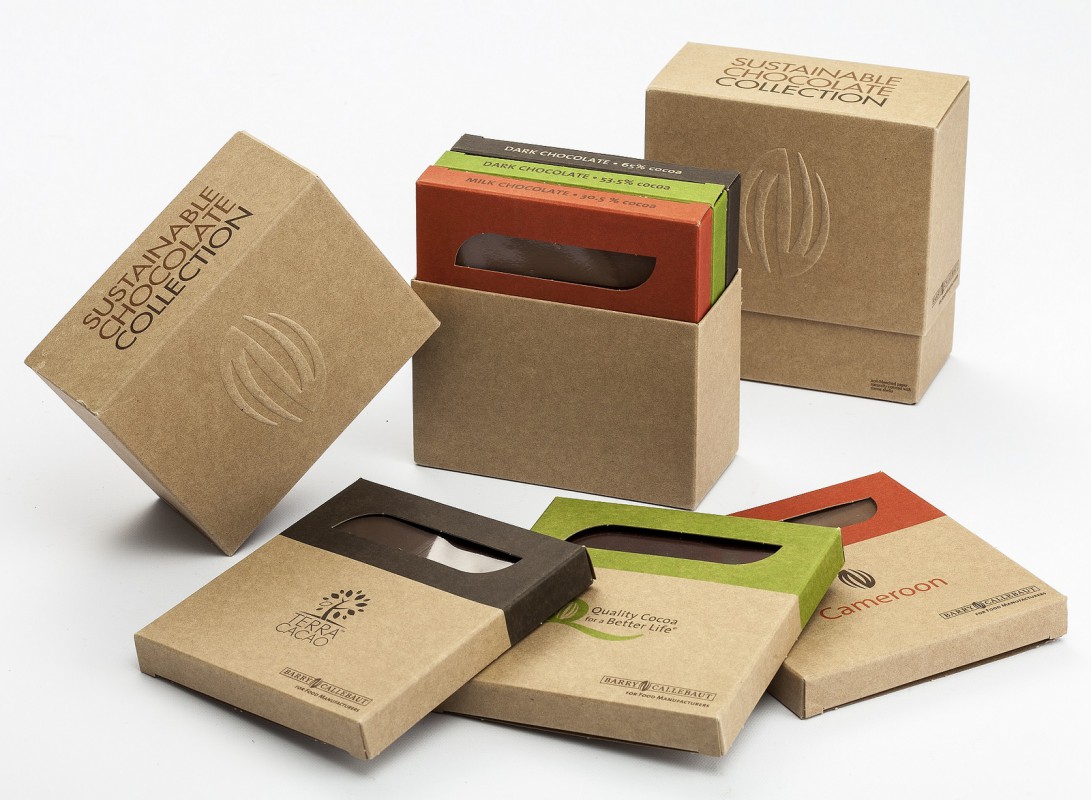
Green Branding and Storytelling Marketing
By narrating the journey “from farm to packaging” brands can convey their environmental and social values to customers. This storytelling approach can enhance brand positioning in both domestic and export markets, building stronger customer trust and loyalty.
Establishing Production Lines, Export and Global Collaboration
Even with limited investment, it is possible to establish production lines for sustainable packaging, opening pathways to global markets. Collaborating with international companies and adhering to environmental standards can increase export potential to countries with strict sustainability regulations.
Revenue and Export Opportunities in Iran with Sustainable Packaging
Although Iran is not a cocoa-producing country, it can draw inspiration from the technology behind Sustainable packaging with cocoa shells by using local agricultural by-products to create similar products. This approach can serve both domestic markets and export to chocolate-producing countries.

Applications of Sustainable Packaging with Cocoa Shells Across Different Industries
Cocoa shells, as a natural and renewable resource, can be used in a wide range of products. They provide a valuable and eco-friendly alternative to harmful packaging materials. Key application areas include :
1. Packaging for Chocolate and Cocoa-based Products
This type of Sustainable packaging with cocoa shells not only aligns the product’s appearance with its eco-conscious brand identity but also adds a natural, green appeal. The texture and color of cocoa shells help create a luxurious and organic feel in the packaging, making it particularly suited for premium chocolate products.
2. Packaging for Dry Food Products
From nuts and dried fruits to tea and coffee, Sustainable packaging with cocoa shells can enhance product shelf life while offering a distinctive, eco-friendly look that appeals to conscious consumers.
3. Production of Biodegradable Single-use Tableware
Due to their fiber-rich composition, cocoa shells can be molded into sturdy, biodegradable tableware. These products are entirely compostable and serve as an environmentally friendly alternative to harmful plastic disposables.
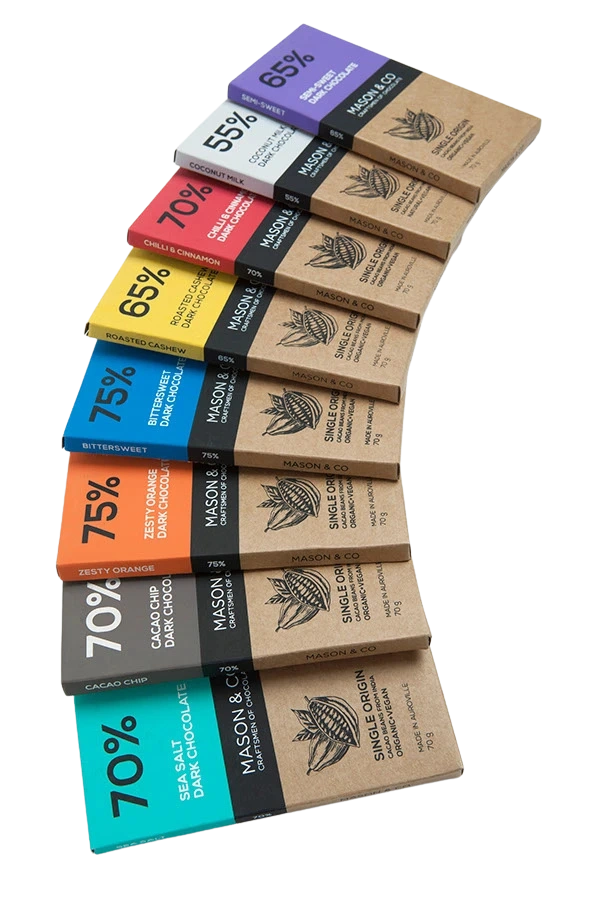
Technological Challenges in Industrial-scale Processing
Sustainable packaging with cocoa shells requires advanced technologies to ensure consistent quality at scale. Many existing production lines are not designed to handle fibrous plant-based materials, resulting in lower efficiency and higher operational costs.
Proposed Solutions:
Collaborate with specialized equipment manufacturers to design optimized production lines.
Adopt green extraction technologies such as Microwave-Assisted Extraction (MAE), Ultrasound-Assisted Extraction (UAE), and Supercritical CO₂ to enhance performance and sustainability.
Partner with research institutions and universities to localize processes and reduce costs.
Meeting Standards and Regulatory Compliance
For packaging intended for direct contact with food, compliance with international regulations such as FDA and EFSA is essential. Failure to meet these requirements can block access to global markets.
Proposed Solutions:
Conduct laboratory safety tests and maintain consistent quality control.
Obtain certifications such as ISO 22000 and implement HACCP systems.
Use compliance as a marketing advantage to build consumer trust and support export growth.
Need for Investment in Research and Development
Developing packaging from cocoa shells requires significant R&D to optimize material composition, durability, and scalability. These initial investments can be challenging for smaller businesses.
Proposed Solutions:
Start with pilot production to test the market and refine processes before scaling up.
Leverage joint ventures with established companies to share technology and reduce investment risks.
Apply for governmental or international sustainability grants to fund early-stage development.
From Concept to Execution – Key Challenges and Solutions for Sustainable Packaging with Cocoa Shell
Implementing sustainable packaging projects with cocoa shells, although it has significant economic, environmental and green branding benefits, will not achieve the desired results without recognizing the obstacles and planning to overcome them. Below, we examine the most important challenges and practical solutions for success on this path.

Cocoa Bean Shell: From Industrial Waste to a Nutrient-Rich & Sustainable Ingredient
From waste reduction to fiber and antioxidant enrichment, cocoa bean shell opens new opportunities for innovation and sustainability in the food industry; make the smart choice today for a healthier tomorrow.
- Related articles
Conclusion : Every Product Deserves Its Own Specialized Cocoa Powder
Investing in Sustainable packaging with cocoa shells can reduce raw material costs, create brand differentiation and open access to eco-conscious export markets. It offers an attractive return on investment while engaging environmentally aware consumers and complying with international sustainability standards. boosting your chances of securing a place in global supply chains.
Moreover, adopting this innovative technology positions your brand as a forward-thinking leader in the chocolate and packaging industries, delivering a lasting competitive advantage in both sustainability and market appeal.


